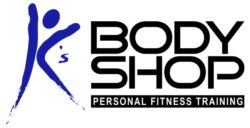As a professional Personal Trainer who specializes in corrective exercise and orthopedic post-rehab, I get my share of dinged up runners seeking to get back in the game. Most of them have the classic muscle imbalances in their hips, core, and lower extremities that lead to injury. Many of them are kicking off their traditional running shoes in favor of minimalist shoes with the intention of strengthening their feet or improving their performance, but fail to recognize the prerequisites that are necessary to make the transition a pain free experience. This post is not going to be about how many miles you should start out with, or how much to increase your mileage by each week (that is highly individual). This post is going to focus on what you need to do to prepare your body to transition to barefoot running before you ever hit the dirt in the first place.
1. Posture
Lousy posture leads to poor running form. Period. If you sit staring at a computer all day, you’ve probably got lousy posture. Fix it. If you don’t know how to fix it, call me and we’ll schedule an assessment.
2. See Number 1
Yes, it really is that important. Folks with lousy posture tend to have common muscle imbalances such as tight hip flexors, forward head, rounded shoulders, weak abs, weak glutes, and no posterior chain to speak of. Adding load to this type of dysfunction rarely ends well.
3. Foot Mobility and Stability
Does your foot overpronate? I do several foot and ankle strengthening exercises with my clients to address poor control of the medial longitudinal arch, strengthen the abductor hallucis and other intrinsic muscles of the feet, as well as tibialis posterior, tibialis anterior, and other extrinsic muscles of the foot and lower leg.
Do you have high rigid arches? We’ll do some mobility exercises to help make your feet more supple so that you can absorb ground reaction forces with less stress to the Achilles tendon, plantar fascia, and other structures of the foot.
Here is a video of a great foot strengthening exercise – Short Foot by Dr. Troy Smith, DC:
4. Squats
Full squats, that is 😉 Do you have the balance, flexibility and strength to do a full squat? How about an overhead squat? If not, I can show you how to do an assisted form of squat to help get you there.
5. Cadence Jumps
Start with two footed hops in place at a cadence of 180 beats per minute. There are free metronome apps for smart phones that you can download so you can set your desired cadence. This cadence is optimal for elastic energy return from tendons and ligaments and will make hopping (and running) seem effortless compared to other cadences. Once you can do it without negative consequences, proceed to one footed hops in place.
6. Single Leg Stability
Can you balance on one foot comfortably (without wiggling and waving your arms all over the place) for a full minute? If not, work on it. Since running in basically a series of single legged hops, this is a biggie.
7. Jump Rope
If you can jump rope for 3 minutes x 3 sets without experiencing negative side effects the next day (ie sore muscles, sore Achilles tendon, sore plantar fascia, pain on the top of the foot), you may be ready to try running up to a mile. Don’t get greedy – the most common mistake people make is trying to do too much, too soon. I don’t care if you’re an ultra runner who’s used to putting in 60 miles a week – you are brand spanking new to barefoot or minimalist running. Start small and go from there.
Most people who are used to wearing traditional running shoes tend to be heel strikers and dissipate ground reaction forces differently than barefoot runners who tend to land on the forefoot. Joint angles are also different between heel strikers and forefoot strikers, which stresses the knee and ankle joints differently. As such, it can take some time to develop the strength, flexibility, and proprioception that is necessary to transition to barefoot running safely. Go through all of the steps mentioned above, start slow, and have fun with it! If you need help – you know where to find me 🙂
